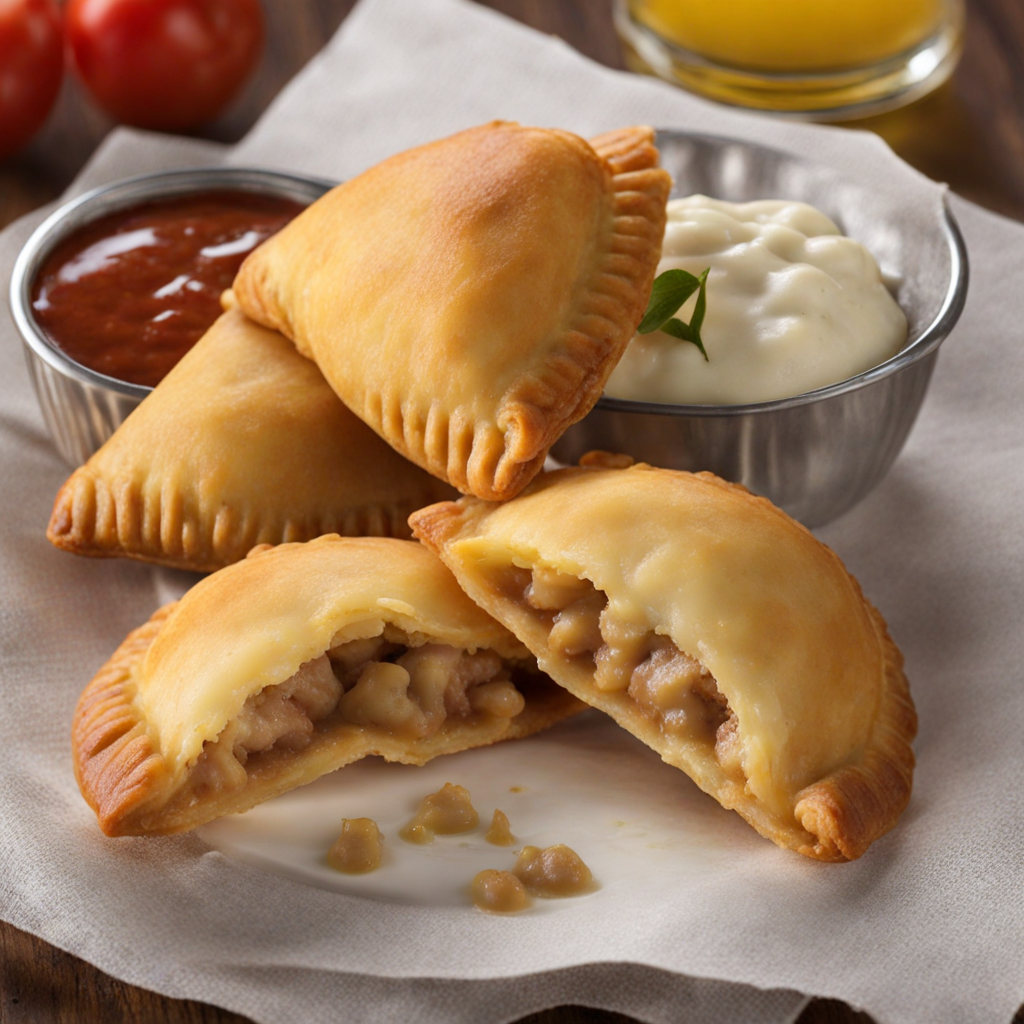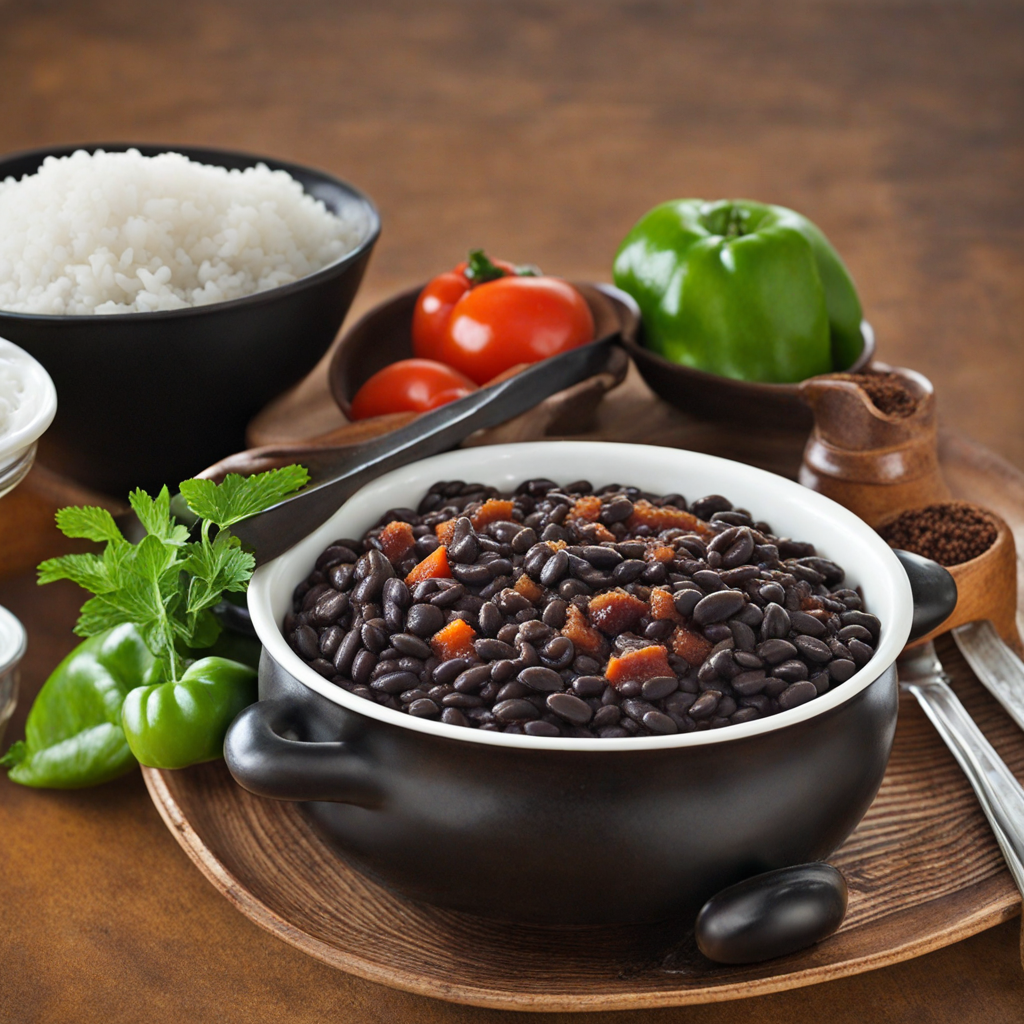Empanada
Empanadas are a delightful Venezuelan treat that encapsulate the essence of its rich culinary heritage. These savory pastries are made from a dough that is typically prepared with flour, water, and a touch of salt, creating a soft and pliable base that can encase a variety of fillings. The dough is rolled out into circular shapes before being filled, folded, and sealed, resulting in a portable dish that’s perfect for any occasion. The texture of the empanada is slightly crispy on the outside, while the inside remains warm and inviting, making each bite a satisfying experience. In Venezuela, empanadas are often filled with an array of ingredients that reflect the country’s diverse food culture. Popular fillings include shredded beef, chicken, cheese, and even black beans, each offering a unique burst of flavor that complements the dough. One of the most cherished varieties is the "empanada de pabellón," which combines shredded beef, black beans, and fried plantains, encapsulating the iconic Venezuelan dish known as pabellón criollo in a handheld form. These fillings are seasoned with a blend of spices that infuse the empanadas with warmth and depth, making them incredibly flavorful. Empanadas can be enjoyed as a snack, appetizer, or even a main course and are often served with a variety of dipping sauces, such as spicy salsa or creamy guasacaca. The versatility of empanadas makes them a favorite among locals and visitors alike, whether enjoyed at street stalls, family gatherings, or upscale restaurants. With their delicious flavors and comforting texture, Venezuelan empanadas are a must-try for anyone seeking to explore new culinary horizons.
How It Became This Dish
The History of the Empanada in Venezuela The empanada, a savory pastry with a rich history, holds a special place in Venezuelan cuisine. This delicious food item has roots that trace back to ancient civilizations, yet its evolution in Venezuela reflects a unique blend of indigenous, colonial, and modern influences. To understand the empanada's significance in Venezuelan culture, we must explore its origins, its cultural importance, and its development over time. #### Origins: A Culinary Journey The word "empanada" is derived from the Spanish verb "empanar," meaning "to wrap" or "to coat in bread." The concept of encasing fillings in a dough has existed for centuries and can be traced back to ancient cultures across the globe. Various forms of stuffed pastries have been found in Middle Eastern, Mediterranean, and Asian cuisines, suggesting a universal appeal for portable and flavorful foods. The empanada's journey into the Americas began with the Spanish colonization in the 15th and 16th centuries. Spanish settlers brought their culinary traditions with them, including the empanada concept, which they adapted using local ingredients. In Spain, empanadas were often made with meat, fish, or vegetables and featured a flaky pastry crust. As these settlers arrived in the New World, they transformed the recipe to incorporate indigenous ingredients and techniques. In Venezuela, the empanada began to take on its distinct identity. The indigenous peoples of the region, such as the Arawaks and Caribs, had their own forms of stuffed corn dough called "arepas." When the Spanish influence merged with these culinary traditions, the empanada evolved into a popular dish that utilized the local staple of cornmeal or wheat flour. #### Cultural Significance: More Than Just Food The empanada is deeply intertwined with Venezuelan identity and culture. It is more than just a dish; it represents a sense of community, family, and tradition. Empanadas are often prepared for gatherings and celebrations, symbolizing hospitality and togetherness. They are commonly found at parties, festivals, and family reunions, where they are served alongside other traditional foods. In Venezuelan culture, the empanada is a versatile dish that reflects regional diversity. Different areas of the country have developed their own versions, showcasing local ingredients and flavors. For example, the empanada de carne (beef empanada) is popular in the Andean region, while coastal areas favor empanadas filled with seafood, particularly shrimp or fish. The choice of filling often depends on what is readily available, making the empanada a true expression of the land and its resources. Empanadas also carry social significance. Street vendors selling this beloved dish can be found in bustling markets and along city streets, making it an accessible food for all. The act of purchasing an empanada from a local vendor becomes an experience in itself, connecting people to their shared culinary heritage. This accessibility, combined with the empanada's deliciousness, has made it a staple of Venezuelan street food culture. #### Development Over Time: A Culinary Evolution The evolution of the empanada in Venezuela has been influenced by various historical events and cultural exchanges. During the colonial period, the integration of African, European, and indigenous cooking practices enriched the empanada's flavors and fillings. The introduction of ingredients like plantains, black beans, and various meats expanded the possibilities for fillings, leading to an explosion of creativity in empanada preparation. In the 20th century, as Venezuela underwent significant social and economic changes, the empanada continued to evolve. Urbanization and migration brought new influences to the culinary landscape. Venezuelans who moved to cities like Caracas began to experiment with different fillings and cooking methods, leading to the development of new versions of the traditional empanada. For instance, the use of cheese became increasingly popular, resulting in the creation of the empanada de queso, which is now a beloved variant. The globalization of food culture in recent decades has also introduced new trends and flavors to the empanada. Fusion cuisine, which blends elements from different culinary traditions, has led to innovative fillings that incorporate international ingredients and techniques. Venezuelan chefs have embraced these trends while respecting the traditional roots of the empanada, creating a dynamic culinary landscape that honors the past while looking to the future. In addition to street vendors and local eateries, the rise of gourmet empanada shops has emerged, showcasing the dish with modern twists and upscale ingredients. This development reflects a broader trend in the culinary world, where traditional foods are being reimagined for contemporary palates. However, even in these innovative settings, the essence of the empanada remains intact, serving as a reminder of its cultural significance. #### Conclusion: The Timeless Appeal of Empanadas The empanada's journey from its origins in ancient culinary traditions to its modern-day status as a cherished Venezuelan dish illustrates the power of food as a cultural connector. Its ability to adapt and evolve while retaining its roots speaks to the resilience of culinary traditions in the face of change. As a symbol of community, hospitality, and creativity, the empanada continues to play a vital role in Venezuelan life. Whether enjoyed at a family gathering, purchased from a street vendor, or served at a gourmet restaurant, the empanada embodies the rich tapestry of Venezuelan culture. With each bite, one can savor not only the flavors of the dish but also the history, stories, and traditions that have shaped it into what it is today. The empanada remains a timeless culinary treasure, bridging generations and celebrating the vibrant spirit of Venezuela.
You may like
Discover local flavors from Venezuela







